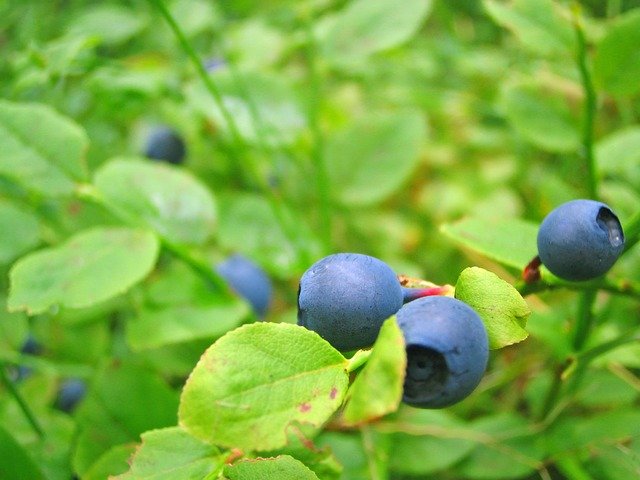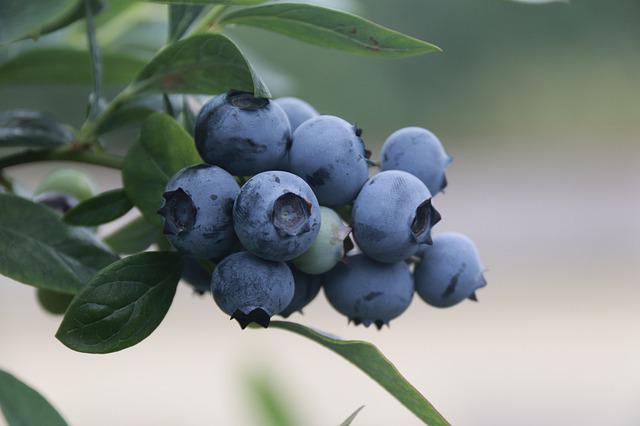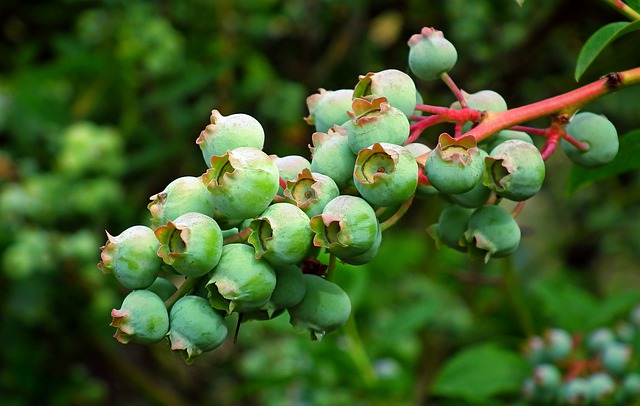How Are Blueberries Grown? | A Simple Guide To Growing Blueberries!

Blueberries can be grown by seeds and by cutting. Blueberries are grown in various parts of the world, but the majority of them are grown in North America. The plants are started from seed and then grown in a controlled environment, usually in cold climates. Once the plants are large enough, they are transferred to a blueberry field, where they are allowed to grow and produce fruit. The berries are harvested when they are ripe and ready to be packaged.
Table of Contents
Growing Blueberries from Seeds
- Blueberries can be grown from seed, but patience is required because the seeds take a long time to germinate, and the fruit won’t be ready for harvest for a long time.
- While it is possible that the seedlings will not look like the parent plant, you may discover a new and delicious variety as a result of this experiment.
- Invest in quality seeds from a nursery if you want the best results. However, if you’re willing to put in a little effort, you can extract them from blueberries and sow them indoors year-round.
- Organic or locally grown blueberries are preferable for extracting seeds from shop-bought berries. Imported berries may have been treated, preventing the seeds from germinating.
- At least three weeks of freezing will simulate winter and help stratify the seeds before you can remove them from the fruit.
- The berries can be defrosted and allowed to come to room temperature before eating when you’re in the mood for them.
- Add water to a blender and blend for 10-15 seconds until the berries are smooth. You can mash them by hand if you don’t have a blender.
- Let the seeds settle down to the bottom. Let them sit for a while. To remove the solids from the liquid, pass it through a fine sieve several times. You can use the pulp you took out at the top as a guide.
- It is possible to rinse the blueberries and then dump them onto a piece of newspaper or paper towel, where they can air-dry.
- You’ll need a container of peat moss and water to germinate your blueberry seeds, so get started.
- Add a layer of peat moss, and then sprinkle your seeds on top.
- A sealed propagator or plastic wrap should be used to keep the moisture inside the container, and it should be placed in a warm, bright area.
- Germination of blueberry seeds can take from 6 to 12 weeks. Keep the potting mix moist during this time.
- Remove the cover when the first seeds start to grow.
- Thin out the weak seedlings when they reach a height of two to three inches.
- It is best to harden off seedlings for a few weeks before planting them out in the fall or spring when they are large enough to handle.
Growing Blueberries from Cuttings
Aside from purchasing young plants, propagating blueberries from cuttings is the most dependable method.
There are both deciduous and evergreen blueberry species. Late spring or summer semi-ripe cuttings can be used to propagate deciduous varieties, which lose their leaves in the fall. Only semi-ripe cuttings, taken in the summer, should be used to propagate Evergreen Blueberry plants in the home garden.
Consider the plant evergreen, and take your cuttings in the summer if you’re unsure what to expect. You should take a few cuttings to improve your chances of success.
- Cuttings that aren’t fully ripe should be removed with a sharp, clean blade or scissors. Use healthy stems of new growth from this season that are supple but not fragile to remove the cuttings.
- Cuttings can be kept in a cool, dark place in a plastic bag for up to a few hours before planting if you are not ready right away.
- Set up a peat moss and perlite container, which is a potting mix.
- It is best to cut your cuttings at an angle just below one of the leaf nodes, keeping them upright.
- Remove the lowermost leaves from the plant.
- The bottom of the stems should be dipped in rooting hormones. This isn’t required, but it will help you succeed.
- Push the stems into the potting mix about halfway, spacing them at least two inches apart.
- Allow the mixture to dry out before using.
- To keep the cuttings from overheating, place them in a greenhouse, cover them with a plastic bag and place them in a bright but not direct spot.
- Keep an eye on the cuttings to ensure the potting soil isn’t drying out.
- After a few months, give the cuttings a gentle tug to see if they have started rooting. If they do, you know they have.
- Your cuttings should be able to be transplanted into an ericaceous compost mix after about three or four months of potting, depending on the variety.
- A few cuttings may fail, but hopefully, there are enough healthy plants for you to grow on.
- Blueberry plants take at least two years to bear fruit.
Growing Blueberries in Pots
Because they can be grown in containers or even in a small yard, blueberries are a popular choice for home gardens. If you’re looking for an easy-to-grow fruit, consider strawberries. When it comes to growing blueberries, containers are the best option. Allow at least 18 inches of drainage space in your container. Excess soil moisture will be able to escape through the unglazed clay walls.
Each plant should have its container, and the blueberry variety you choose should stay small. Select an acid-loving potting mix, then plant your blueberries at the same depth as in the nursery pots. Make sure the soil is never soggy, and place the container in direct sunlight if possible. Use an acid-loving plant fertilizer in spring.

Tips in Growing Blueberries
Choosing and Preparing an Ideal Location
You should choose a sunny location with well-drained soil free of weeds. To get the best results from your blueberry plants, locate them in an area where irrigation is readily available.
Raised beds are a great option in areas where the soil is unsuitable or poorly drained. Growing blueberries in pots on your patio is a great alternative if you don’t have a yard and live in an apartment or condo.
Acidic soils are best for blueberries. Peat moss can be used as a planting medium for blueberries in nearly any soil type. A 212-foot diameter and 1-foot deep planting area should be prepared for each plant when planting in the ground. Remove no more than a third to a half of the soil. A similar volume of pre-moistened peat moss should be added and thoroughly mixed.
In most cases, one compressed bale of 4 cubic feet will suffice for 4-5 plants. Mix equal parts peat moss and bark (not cedar or redwood) in raised beds. You can also use compost or planting mix. Consult the staff at a nearby garden center. Soil amendments are their specialty, and they’ll be able to give you the best advice.
Spacing
With a few exceptions, blueberries can be grown in hedgerows as close to 2 – 2 12 feet apart. Planting in rows requires 8 to 10 feet between each row, depending on the mowing or cultivating equipment.
Planting
Planting is best done in the fall or spring in most places, but it is possible to do so year-round in some.
If you purchased containerized blueberry plants, you could roughen up the root ball’s outer surface. The plant’s topsoil should be a half-inch higher than the surrounding soil, and the root ball should be firmly held. Then, build a mound of soil around the roots and water it thoroughly.
Mulching
To conserve water, prevent weeds, and add organic matter, it is best to mulch Blueberries with 2-4 inches of mulch. Bark O Mulch, acid compost, sawdust, and grass clippings are all good options for mulching. Every two years, repeat this procedure. Cedar and redwood trees’ bark and sawdust should not be used.
Pruning
It is wise to allow blueberries to establish themselves before allowing them to bear fruit. Remove the majority of the flower blooms as they appear on smaller plants if you’re just starting. Each year, blueberry plants should be pruned heavily to avoid over-fruiting, resulting in small fruits or weak growth.
Pruning is one of the most common mistakes we see home gardeners make when growing blueberries, and we’ve been doing it for three decades at Fall Creek®. Your plants will grow stronger and abundantly if they have pruned aggressively every year. Here are a couple of pointers:
Cut back the low growth at the foundation.
Allow brightly colored lateral branches to remain after removing the dead wood. Remove any branches that are too short or discolored.
Prune your plants each year until you’ve removed 1/3 to 1/2 of the wood. Remember that this will encourage new growth and berry production, so go ahead and prune away.
Fertilizing
Blueberries prefer acid fertilizers like rhododendron or azalea formulations once they are established. To learn more about specific plants, speak with the staff at your local garden center. Blueberries are particularly vulnerable to over-fertilization. Make sure to read the label.
In the spring, it’s best to fertilize twice, once in the early stages and once in the late stages, to maximize growth. After fertilizing, be sure to thoroughly water your plants. Blood meal and cottonseed meal are excellent organic fertilizer ingredients. Plants can be harmed by manure, so be careful.

